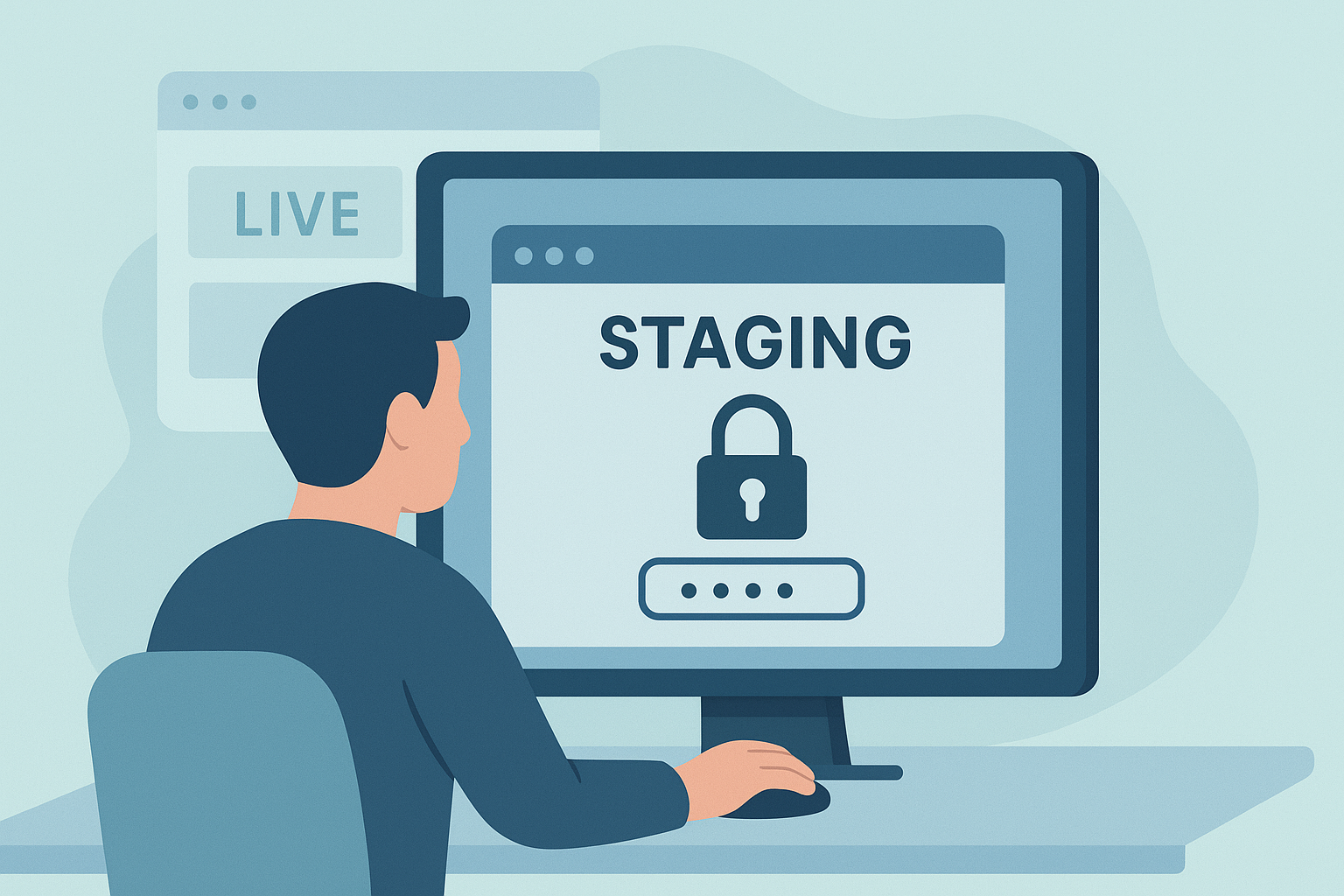Ever wanted to test themes, build a website, or develop custom plugins without risking your live website? The solution is simple, install WordPress on localhost. Regardless of being a beginner trying it out for the first time or an experienced developer tackling your next major project, running WordPress locally is a smart and safe move.
In this guide, we’ll walk you through how to set up WordPress on your computer using local server software. No web hosting or domain name required. Just your machine, a little time, and the steps below.
What is Localhost?
Let’s quickly clear up the term localhost. When you install WordPress on localhost, you’re running the website on your own computer. It behaves just like a live WordPress site, but only you (and anyone on your local network, if configured) can access it. It’s ideal for development, testing, or learning WordPress in a no-pressure environment.
Why Use a Localhost?
Let’s understand why you’d want to install WordPress on localhost.
Free Testing Environment
Want to experiment with new plugins, themes, or custom code? A localhost lets you test everything without paying for hosting services. You can break things, fix them, and learn without any financial consequences. It’s like having your own WordPress playground.
Faster Development
Since everything runs directly on your computer, there’s no need to wait for server responses or deal with internet lag. Changes appear instantly, making development and testing much quicker. You can make modifications and see results in real-time, which is a massive time-saver for developers.
No Internet Required
Once set up, your localhost WordPress installation works completely offline. This means you can work on your website from anywhere – during your commute, at a cabin in the woods, or even on a plane. Perfect for developers who need to work on the go or in areas with unreliable internet connections.
Safe Space for Experimenting
Think of localhost as your website’s sandbox. Want to try that complex plugin? Curious about editing your theme’s code? Go ahead! If something goes wrong, it won’t affect any live website. It’s the perfect environment for learning and experimenting without the risk of breaking a production website.
Zero Hosting Costs
While web hosting isn’t typically expensive these days, why pay for it when you’re just learning or testing? Installing WordPress on localhost means you can have as many WordPress installations as your computer can handle, all completely free. This is especially valuable for developers working on multiple projects or beginners learning the ropes.
These benefits make localhost an invaluable tool for:
- WordPress developers
- Web designers
- Content creators testing layouts
- Students learning web development
- Business owners planning website updates
- Anyone wanting to explore WordPress risk-free
While localhost is fantastic for development and testing, you’ll eventually need proper web hosting when you’re ready to make your website public. But until then, localhost provides all the features you need to build and test your perfect WordPress site.
What You’ll Need
Before we get started, make sure you’ve got the following:
- A computer (Windows, macOS, or Linux)
- Local server software like XAMPP, MAMP, Local by Flywheel, or WampServer
- A WordPress download from wordpress.org
We’ll use XAMPP in this tutorial, as it’s free and works across all major operating systems.
Let’s begin!
Step 1 – Download and Install XAMPP
1. Head over to apachefriends.org and download XAMPP for your operating system.
2. Run the installer and follow the prompts.
3. Once installed, launch the XAMPP Control Panel and start both Apache and MySQL.
Tip: If Apache or MySQL don’t start, make sure other apps (like Skype or VMware) aren’t using ports 80 or 3306.
Step 2 – Create a Database
1. Open your browser and go to http://localhost/phpmyadmin.
2. Click on “Databases.”
3. Under Create database, type a name like wordpress_local and click “Create.”
Step 3 – Download and Set Up WordPress
1. Go to wordpress.org and download the latest version of WordPress.
2. Extract the .zip file and rename the folder to something like my-local-site.
3. Move this folder into the htdocs directory inside your XAMPP installation. (Usually C:\xampp\htdocs on Windows or /Applications/XAMPP/htdocs on macOS.)
Step 4 – Install WordPress on Localhost
1. In your browser, go to http://localhost/my-local-site.
2. Choose your language and click “Continue.”
3. Enter your database details:
- Database Name: the one you created (e.g., wordpress_local)
- Username: root
- Password: leave blank
- Database Host: localhost
4. Click “Submit” and run the installation.
5. Fill in your website title, username, password, and email. Then click “Install WordPress.”
That’s it! You’ve successfully installed WordPress on localhost.
What’s Next?
Now that you’ve installed WordPress locally, the possibilities are wide open:
- Test themes and plugins without any risk
- Learn how to develop WordPress sites from scratch
- Build full websites offline, then push them live
- Tweak your site performance in a private space
You can access your local site at http://localhost/my-local-site and log in at http://localhost/my-local-site/wp-admin.
Troubleshooting
While setting up WordPress on localhost is usually straightforward, you might encounter a few common issues. Here’s how to fix them:
Can’t Access phpMyAdmin?
When you can’t access phpMyAdmin (typically at http://localhost/phpmyadmin), the most common cause is that MySQL isn’t running properly. Here’s what to check:
- Verify that the MySQL module shows a green light in XAMPP Control Panel.
- If it’s red or not starting, try stopping and restarting the service.
- Check if another program is using port 3306 (MySQL’s default port).
- Look at XAMPP’s error logs for specific error messages.
- Restart XAMPP completely if necessary.
Getting a 404 Error?
A 404 error usually means WordPress can’t find the requested files. Common solutions include:
- Confirm that your WordPress files are in the correct location (C:\xampp\htdocs\wordpress).
- Check that folder names match exactly in your URL (WordPress is case-sensitive).
- Ensure Apache is running (green light in XAMPP).
- Verify that you’re using the correct URL format (http://localhost/wordpress).
- Check file permissions if you’re on Linux/Mac.
- Make sure your .htaccess file isn’t causing issues.
Database Connection Error?
If WordPress can’t connect to your database, try these fixes:
- Double-check your database name matches exactly what you created.
- Verify the username is “root” (default for localhost).
- Ensure the password field is blank (unless you set a custom password).
- Confirm “localhost” is the correct host name.
- Check if MySQL is running properly.
- Try recreating the database from scratch.
- Verify wp-config.php has the correct credentials.
Take a systematic approach when troubleshooting. Start with the basics, check if everything’s running and if the paths are correct, before jumping into more complicated fixes. And don’t forget, the WordPress and XAMPP communities are awesome places to get help if you get stuck.
Wrapping Up
Learning how to install WordPress on localhost opens up a safe and flexible environment for building and experimenting with websites. You can design, test, and troubleshoot without needing a live server or internet connection. It’s a powerful way to work faster, avoid unnecessary risks, and refine your website before launching it to the world.
Have you tried installing WordPress on localhost before? Drop a comment below with your experience or any questions you might have.


